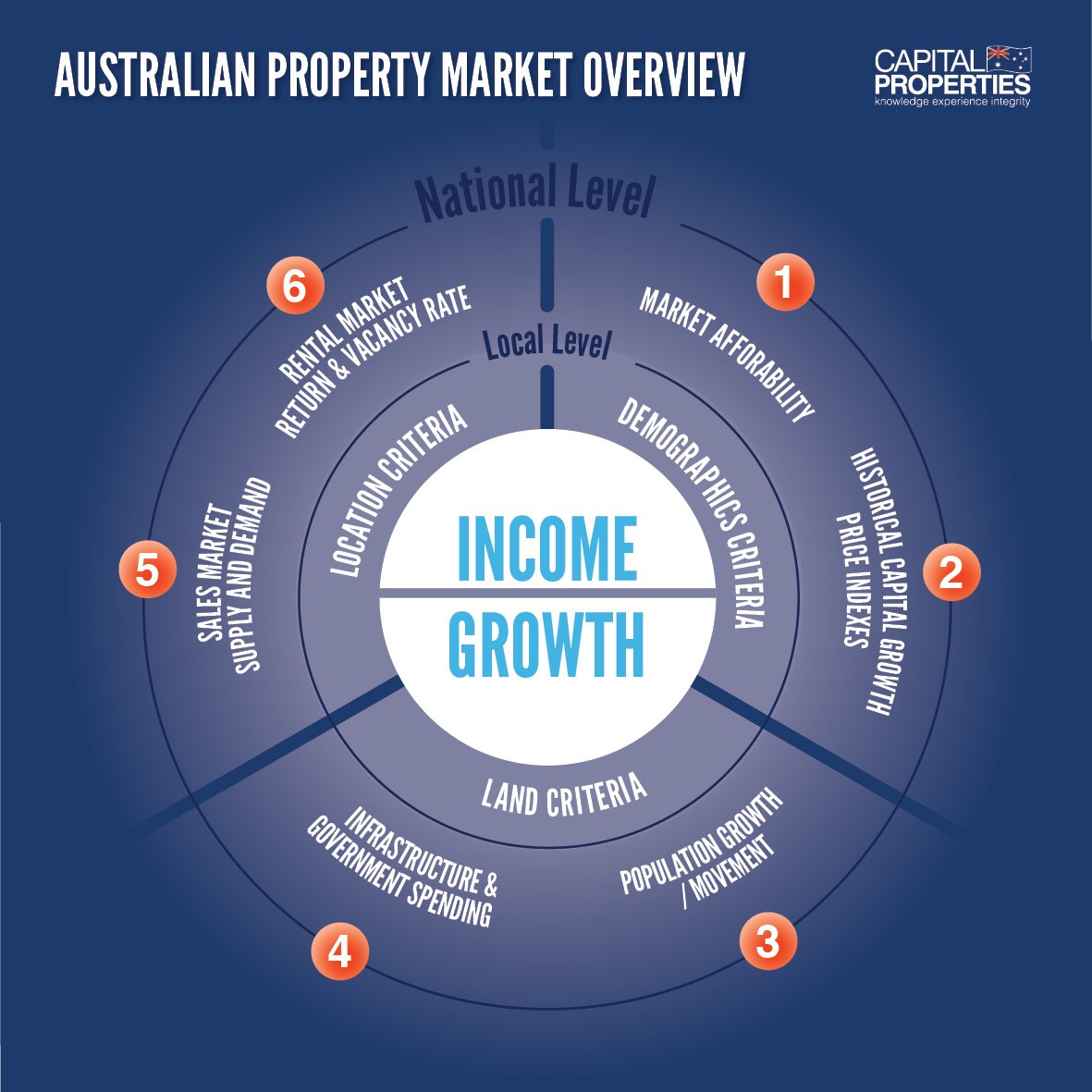Australia is one big country. In choosing where to invest in property, you’ll need to start with the big picture.
Accessing well researched, current insights into how Australian capital city property markets are performing is the best place to start.
Once you target a capital city that suits your financial goals, it is time to get micro and funnel down your choices to a specific location.
In this part of our series, we’ll get you looking at the big picture – the Australian capital city property market.
On the go? Here’s 30 seconds of key take outs:
· In the property market, history repeats itself and is a great indicator.
· Proven strategies are will help you choose your best investment property start.
· Start with a nationwide view, then narrow it down based on detailed location criteria.
Keep reading >>
Get a property market overview with 6 key factors to choose the right property investment area
Once you’ve got your hands on some good quality data about the Australian capital city property market, here are the key factors you need to consider in choosing a capital city market that suits your goals.
Investment location key factor #1: Market Affordability
Based on current median house prices, which cities are affordable?
Understanding how much you can afford, will help you narrow down your property market.
By looking at the median house price of each capital city, you’ll be able to determine which of these markets is in your reach. This will give you a solid idea of where to start, and on what price represents a good entry point.
Investment location factor #2: Median House Prices
What does the historical capital growth data tell you?
Potential for capital growth – that means you will be able to unlock equity down the track to grow your portfolio – is a key factor to consider.
Track the median house prices of the specific market you are looking to enter. Look at property market data that shows signs of growth right now.
Investment location key factor #3: Population Growth | Population Movement
Is the population growing, and why?
Population is a key indicator of demand for a particular property market. Population growth will be impacted by overseas and interstate migration, and natural birth and attrition rates – births and deaths.
Population shifts in a property market are a strong indicator of longer term, sustained demand, and in turn capital growth driven by demand.
The big question is what makes it attractive for people to live in a particular suburb in a major capital city or regional centre?
Affordability is a driving factor of demand in the current property market. Right now, most major capital cities are pushing beyond the half a million median price threshold.
Well-planned government and private infrastructure projects can also attract new residents and grow families, particularly if a location is in high demand and infrastructure is keeping up with, or staying ahead of, population growth.
Investment location key factor #4: State Infrastructure – Planned | Existing – Private | Government
Are government and private projects prioritising infrastructure spending?
Infrastructure funded by government and private investing is largely driven by population shifts.
An emerging area with funded projects due to be delivered in the medium term of 5 to 10 years; or an area where demographics are shifting, referred as gentrification or urban renewal, both indicate positive property market criteria worthy of exploring further.
Check out the state government and local government websites to research infrastructure projects in the pipeline. The prioritisation of short, medium and longer term investment projects will generally align with population growth of the area.
Investment location key factor #5: State Sales Market – Supply | Demand
How are property sales looking as an indicator of supply and demand? Are they up from the year before or down?
The supply and demand of the property sales market of a specific area can be subjective. The Australian Bureau of Statistics (ABS) population figures can lag the number of properties listed on real estate websites. However, putting the two figures side by side can give you a general feel of the current sales market as a ration of the population.
The lag between the ABS population statistics and dwelling starts could be due to the time it takes for building supply to start hitting the market. Planning, design, approvals and construction time frames all need to happen in the lead up to a property being listed. You are best to enlist the guidance of an expert in exploring these criteria.
Investment location key factor #6: Rental Market – Median Rents | Vacancy Rates
How is the rental market looking on return and vacancies?
The best way to gauge rents for specific property markets is to talk to local agents working in the area you’re looking to invest in.
#StandEasyTip 2: Get three or more rental appraisals done. When talking to the agent ask how many properties they manage as opposed the amount of properties they currently have advertised for lease.
The number of rental properties being managed will give you a good sense of vacancy rates. There are free tools available to explore this criteria further, such as SQM Research vacancy rate (SQM Research > Free Property Data > Research Reports > Vacancy Rates.
Of course, this is just a starting point. There are more factors to consider than these six. We just wanted to give you some of the basics to help you on your way. Make switched-on property investment decisions. Expert guidance can move you closer to your financial goals, with more certainty and speed.
Get some experts around you to help you on your way.
Free investor tools: Australian Property Market Overview PDF | Australian Property Market Report






